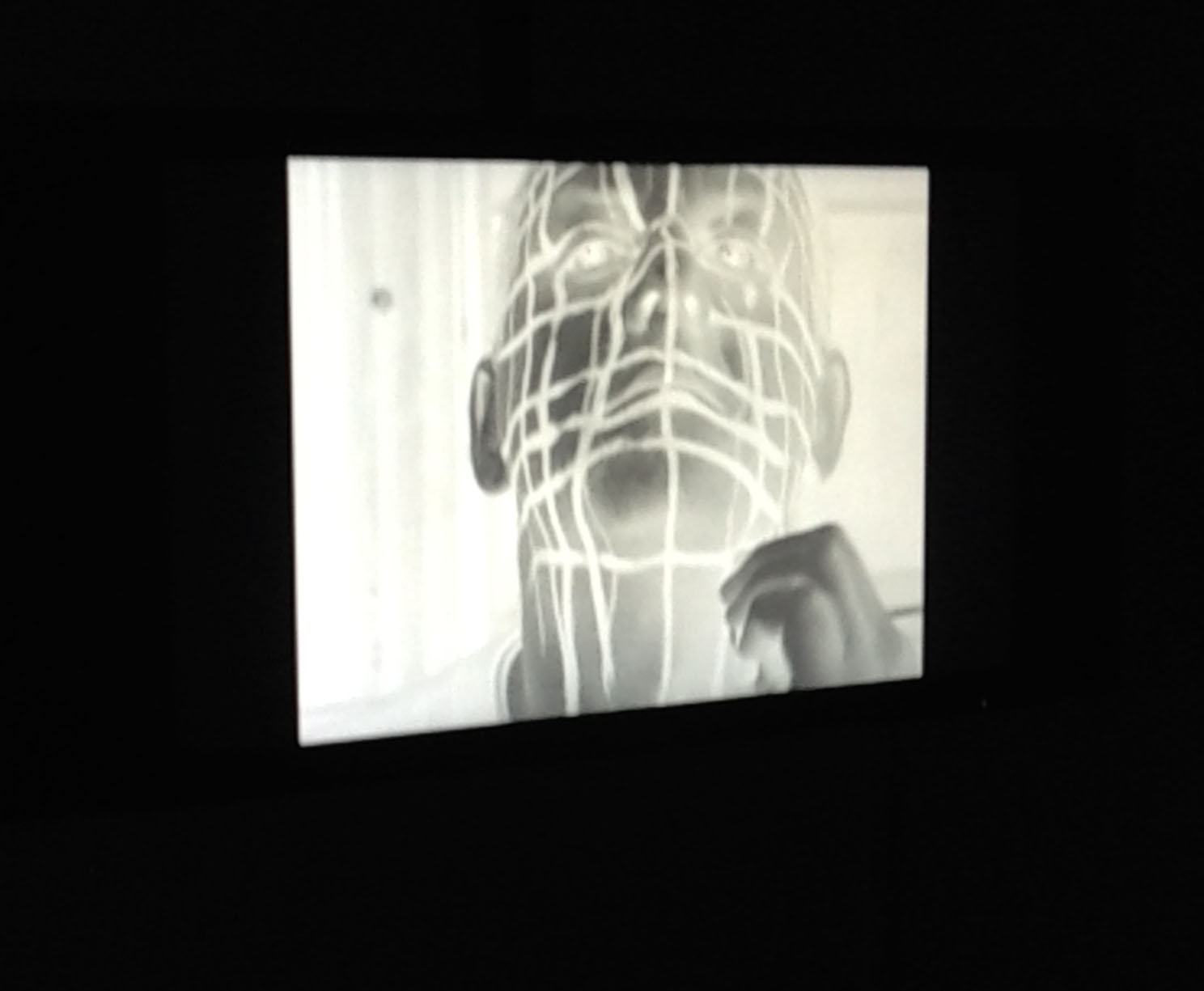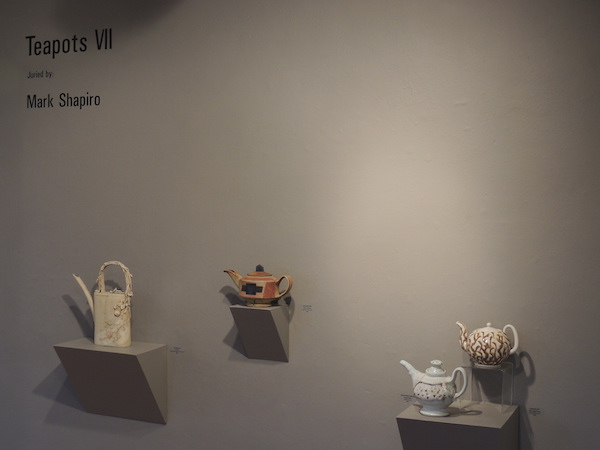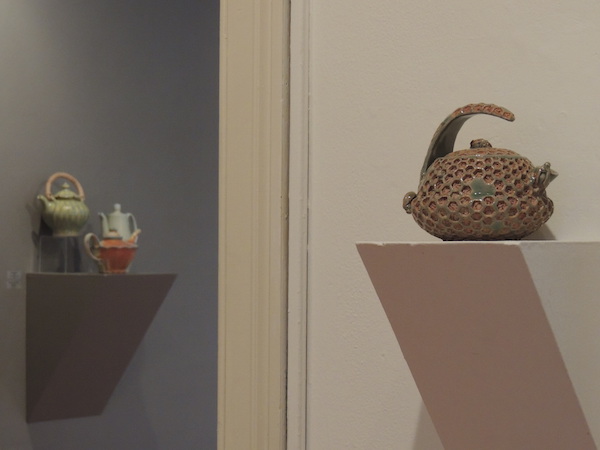Kerr Houston on Teapots VII, a Juried Exhibition at Baltimore Clayworks
Teapots would seem to be simple things. They hold water and tea leaves; they pour; they stand. Ideally, they protect the hands from the heat of the contents. At the same time, though, teapots are often also more than simple things – or, to put it differently, their very simplicity has allowed them to take on, over the centuries, a range of nuanced associations.
To the Zen tea master Sen no Rikyu, the pot offered a convenient emblem of modest sufficiency: “If you have one teapot,” he wrote, “and can brew your tea in it, that will do quite well.” To the Victorian Lord Chancellor Edward Thurlow, by contrast, the teapot signified a mundane triviality; it was he, after all, who apparently coined a saying by referring to an uprising on the Isle of Man as a tempest in a teapot. But such a view would hardly have satisfied George Gissing, who wrote in 1903 of the “soft yet penetrating odour which floats into my study with the appearance of the teapot!” The simple teapot had become, for Gissing, an emblem of civilization: the pleasures of home in concrete form.
Given such a range of associations, it’s unsurprising that artists, too, have offered a variety of takes on the teapot. Indeed, the teapot is something like the sonnet, or the 12-bar blues: a basic, universal motif that can support an immense number of formal experiments. Want proof? Check out Garth Clark’s seminal 1989 book The Eccentric Teapot, which proffers an astounding array of vessels that surprise, wink, and take joy in revising received tradition. Flipping through the book is vaguely like watching the NBA’s slam dunk contest and its series of whimsically baroque takes on a familiar subject. Or, better yet, stop by Baltimore Clayworks, which is currently hosting (through March 7) Teapots VII, the latest installment of an exhibition that attracts entries from across the country. Juried by Mark Shapiro, the handsome show features teapots by dozens of ceramic artists, several of whom are local. Walking through it is a pleasure that is both sensory and abstract: it’s like wandering through a vivid demonstration of Plato’s distinction between objects and ideal forms.

Consider, for instance, the work of Stephen Heywood, who teaches at the University of North Florida and has two pieces in the show. Both embody a vaguely steampunk aesthetic, as the molded clay forms mimic industrial details and conjure the mottled, flaking texture of rusted iron. I was especially engaged, though, by Teapot, a wood-fired piece of stoneware. The handle and lid of the piece invoke the coarse threads of a metallic screw, the stenciled number 3 suggests seriality and the cold logic of a stamp, and the feel of the piece is rugged, heavy, and associatively metallic. Broadly, the work evokes earlier examples by Rollie Younger, whose metallic glazed teapots have included metal gauges and forged details. But Heywood’s piece also calls, interestingly, certain Japanese traditions to mind. Its rotund form, for instance, resembles that of many dobin (a traditional form of teapot), while its rusticated texture exemplifies the notions of wabi (a sort of frugal simplicity) and sabi (a rough, weathered appearance).
One of the rewards of the show, in fact, lies in the sheer variety of textures on display. Many of the works are insistently tactile; they call out to be hefted, gauged, felt, or even stroked. A mottled specimen by Cathie Polak (a Maryland-based artist, who works out of Glen Echo) is riddled with stippled, raised dots in rows that recall the rough patters of a sea urchin. Grace Ha, a California-based artist, offers instead a series of fragile honeycomb forms that articulate pure negative space. A number of the examples include reed handles, with their insinuations of coarse fiber and slight pliability. And then, too, there is Sam Chung’s wonderful Cloud Teapot.
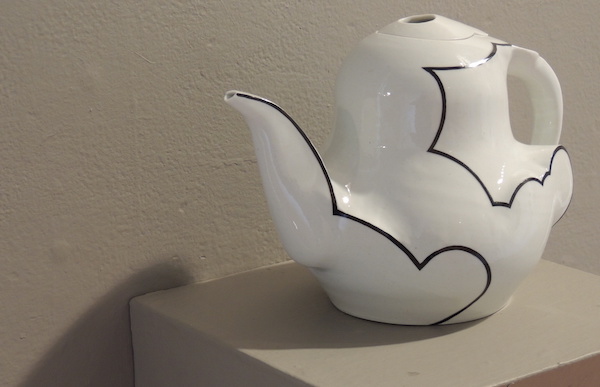
A glazed piece of porcelain with applied China paint, Chung’s pot is a witty joke: it’s a bulbous composition built of out billowing and yet brittle forms. The hefty organic curves of the pot and the elegant painted arcs suggest the puffy contours of cumulus clouds, and yet the pot is rigorously resolute and static. In a historical sense, Chung’s work recalls much earlier explorations of a comparable tension between subject and material: certain teapots made in 18th-century Yixing, for instance, coyly imitate supple bamboo stalks. But Chung’s pot also reminds us, finally, of the weirdly profound function of the typical teapot. “You put water in a teapot,” Bruce Lee once observed, “it becomes the teapot.” In Chung’s hands, water takes the form of clouds – and then becomes, again, the teapot.
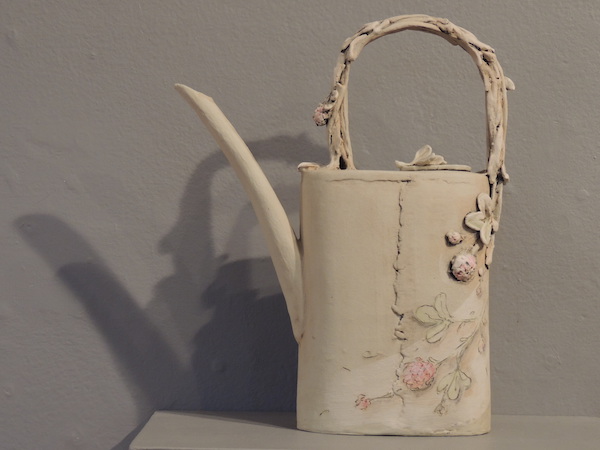
A number of other pieces in the show also seem to delight in transformations of material, or in tensions between depicted form and underlying medium. Typical of such an approach, and also engaging on several other levels, is a narrow pot by Una Mjurka, a Latvian ceramic artist now based in California. Entitled Red Clover, the vessel is made of earthenware, but also features motifs in engobe (a clay slip) and underglaze pencil. The result is delicately pastoral; the handle seems built out of intertwined stems, while the body of the pot is partially covered in modeled and etched floral forms. In a sense, then, Mjurka’s pot seems interested in organic transformation; there’s an almost Ovidian aspect to the pot. But the spout, which is long, elegant, and utterly geometric, and the prominent seam of the body foreground, at the same time, the process of potting. Rather as a flower grows, we sense, this pot took shape, over time and in stages.
This show, then, offers real depth, despite its seemingly narrow focus. Its six rooms comprise a soft proof of Clark’s observation that teapots offer “a familiar format for expressing the unfamiliar.” At the same time, the layout gently frames the work of local artists; a room dedicated to artists working out of Glen Echo is informative, while also feeling very much a part of the exhibit as a whole. And the scale of the show, as well, feels appropriate: after all, teapots often play a role in social rituals, and here they’re allowed to congregate in a motley, diverse group.
A contrarian might point out, I suppose, that a Zen monk would peer, perplexed, at the prices of some of the vessels (a few of which top $800). But even that hypothetical monk, it’s fair to say, might recognize a familiar philosophy in the formal vocabularies, textures, and underlying spirit of play that characterize many of the examples. Teapots are not, it seems, mere simple things, and this show is a bright demonstration of that fact.
Author Kerr Houston teaches art history and art criticism at MICA; he is also the author of An Introduction to Art Criticism (Pearson, 2013) and recent essays on Wafaa Bilal, Emily Jacir, and Candice Breitz.
